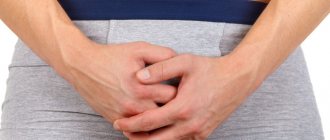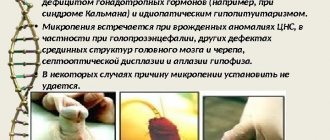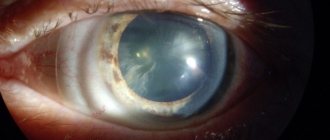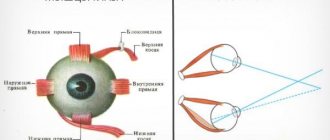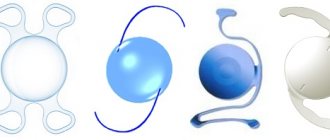When and how is it better to circumcise a child?
Many residents of our republic, with the birth of a boy in the family, begin to think about the need for circumcision surgery for their baby. During a consultation with a pediatric surgeon in Makhachkala, they often ask questions that concern them regarding this topic.
The most important questions for all men and no less exciting for mothers, the 2 questions that parents most often ask at an appointment with a specialist at the Healer children's clinic in Makhachkala are:
- “At what age is it better to be circumcised?”
- “What is the best method to do this?”
I will try to answer them reasonably.
The earlier the better!
Regarding age. I always say: “The sooner the better.” That is, these are the first 10 days, then a month, then up to 3 months. It is advisable for the child to have time to complete this procedure during this period. Why? Firstly, because a breastfed baby gets sick less. Even if he is not breastfed, in the first 1.5 months the baby has maternal antibodies in his blood, which protect him from almost all diseases. We can say that during this period the baby is under reliable maternal armor protection.
In addition, breast milk contains interferon, a protein secreted by body cells that provides protection against viruses. Therefore, breastfed children tolerate circumcision very well. Breast milk is an excellent pain reliever, and good pediatric surgeons in Makhachkala often ask you to express milk in order to feed the child during surgery.
Further, with regard to infectious complications of the wound process. At the age of up to a month, the microflora has not yet fully formed, i.e., pathogenic flora has not yet developed in the child’s tissues. Therefore, it is better to perform the surgical procedure before a month, while the small patient is relatively sterile.
As an experienced pediatric surgeon, I will note another advantage of early circumcision - the small diameter of the vessels, that is, very thin vessels in which there is practically no severe bleeding. Also in infancy, the child’s physical activity is reduced. He lies calmly, does not injure his organ and, accordingly, the wound heals faster. The regenerative abilities of infants are much higher than those of older children.
Which method is better?
As for circumcision methods, I can professionally say that in fact, today the best method is the radio wave method. Currently, this modern method of surgical intervention is widely used in our Healer medical clinics in Makhachkala. People call it laser. In fact, true laser circumcision does not exist. There is no laser designed for this procedure. This is an American-made radio wave apparatus, with the help of which pediatric surgeons perform operations to circumcise the foreskin of children.
Advantages compared to the traditional method:
- Less traumatic.
- Fast wound healing.
- The risk of bleeding, even in older, active children who walk, run, and jump, is reduced to almost zero.
- The radio waves themselves have a very strong disinfecting effect.
I, as a doctor, as a pediatric surgeon, see the greatest advantage of this method in the fact that the risk of bleeding from this procedure is significantly reduced, almost eliminated.
To summarize, I advise all parents to perform this surgical operation to circumcise the foreskin of their boys, if possible, at an earlier age. The child tolerates it better, there is no stress, including for the parents, the wound heals faster, and the risk of infectious complications is much lower.
How to care for your child after surgery?
Circumcision or circumcision
- This is a surgical intervention to remove the prepuce.
Prepuce
is the foreskin that encloses the head of the penis. Today, this intervention is carried out for religious (in Islam or Judaism) or medical reasons: for cicatricial phimosis, skin diseases and inflammatory processes of the urinary tract.
What happens after a child's circumcision?
This worries many parents. In this article we will look in detail at what care after circumcision for boys consists of.
Circumcision in boys: how to care after surgery
? Proper care of the child after circumcision is very important for a smooth recovery. This will not only reduce pain in the penis area, but will also serve as a measure to prevent the development of adhesions, infections and bleeding. If the rules for caring for the penis are violated after circumcision, lymphedema may develop, accompanied by the separation of purulent exudate. This condition is manifested by the appearance of hyperemia and inflammation in the area of the head of the penis. The postoperative suture may swell and become deformed. When an infection gets on the wound surface, the child experiences symptoms of intoxication: fever, weakness, headache, nausea.
Healing after child circumcision
After circumcision, a small seam remains on the surface of the penis. The skin of the penis is held together with self-absorbable threads, so there is no need to see a doctor to remove them. In the first 1-3 days, the penis looks swollen, may have a bluish or purple color, lymph is separated from the wound surface - a transparent, colorless or yellowish liquid. This is a normal condition and does not require medical intervention. If the pain after surgery is so severe that painkillers do not work, you should immediately consult a doctor. Healing after circumcision in children can take 2 to 5 weeks. During this period, postoperative scars should disappear. In the next 2-3 months, it is necessary to especially carefully observe genital hygiene. This determines how long it takes for circumcision in children to heal. In young children, the circumcision procedure is somewhat easier than in adolescents. This is due to the fact that infants have thin, rapidly regenerating epithelium, and the postoperative wound is very small. In addition, involuntary erections, which often occur during puberty, can in rare cases cause tension or deformation of the suture. With the question of how long it takes for a child to heal after circumcision, everything is clear, but is it possible to speed up and make this process easier?
Dressings
High-quality care after circumcision in children is necessary for a quick and painless recovery after circumcision. When carrying out postoperative procedures, it is necessary to follow a number of recommendations: The first dressing is performed 1-2 days after circumcision. During this time, the bandages must not be removed. It is recommended not to use diapers for small children to avoid getting the dressing wet. Dressings must be done regularly. On average, bandages are changed regularly 3-6 times a day. As the suture heals, the frequency of dressings is reduced to once a day. If fibrin, a yellowish liquid that forms a film on the surface of the penis, is released from the wound, then hydrogen peroxide, chamomile decoction or a weak solution of potassium permanganate should be used when removing the bandage. In this case, the wet bandage can be easily removed and will not injure the skin of the penis. For small children, dressings should be done every time the diaper is changed. Urine and feces should be removed with wet wipes in the direction from the head of the penis to the abdomen. Do not allow your child to remain in a wet diaper for a long time. A wet, warm bandage is a favorable environment for bacteria to multiply. Do not allow your child to fiddle with or remove bandages. This not only threatens infection in the wound, but can also lead to injury to the postoperative suture. The child should be bathed 48 hours after surgery in warm, soapy water without adding scented foams or bath gels. For normal healing of the suture, it is recommended to remain in bed for the first 3-4 days.
Remember that how long it takes for circumcision to heal in boys directly depends on care and hygiene requirements. Next, how to treat boys after circumcision and what to apply after a child’s circumcision?
Treatment with ointments
Care after a child's circumcision involves the use of different methods. To prevent infection of the suture and the development of inflammatory processes, the wound surface of the penis should be treated with special means that accelerate healing: Means for removing the bandage and treating the suture. You can use a weak solution of potassium permanganate or brilliant green, an infusion of chamomile or sage. You can also use pharmacological preparations: Betadine solution in a ratio of 1 ml per 100 ml of water, 3% hydrogen peroxide, furatsilin in the proportions of 1 tablet per 100 ml of water. Antibiotic ointments: Levomekol, Gentamicin, Tetracycline or Geoxyzon. The product is applied 2-3 times a day with a clean cotton swab. When treating a wound, you do not need to press on it or try to rub the ointment into the skin. Before using medications with antibacterial effects, be sure to consult your doctor. Painkillers and anti-inflammatory ointments and gels: Betadine, D-Panthenol, Actovegin and Baneocin. These products are recommended to be used after the wound is covered with a film or postoperative crust, that is, 3-4 days after the intervention. The drug should be applied in a thin layer to clean, dry skin 2-3 times a day for 2-4 weeks. The seam must be processed with clean hands or wearing disposable medical gloves. For dressing, use sterile bandages and napkins or cotton pads.
Use of special underwear.
In addition to various pharmacological agents for children, there is special underwear that speeds up recovery after circumcision in children. Circumcision panties have a special rigid frame insert, which protects the penis from injury or dust. In addition, in such a product, after circumcision, the child cannot comb the stitches or tear off the bandage. High-quality panties after circumcision should be made of cotton. Pay attention to how the child feels in them: whether the belt or elastic bands are too tight for him, whether there are any parts that rub the skin. You can purchase this underwear in pharmacies, on special websites and in some children's clothing stores. Also, in some private clinics such circumcision panties are included in the cost of circumcision. The postoperative period will be much more painless using this underwear. Circumcision is a simple operation, but it requires a fairly long recovery period. During the entire recovery period after a child’s circumcision, it is necessary to carefully maintain hygiene, monitor the child’s well-being and follow the doctor’s recommendations. Now you know how to care for a child after circumcision. We hope that the information presented in the article was useful to you. We tried to talk in as much detail as possible about the topics: what is circumcision in boys, care after circumcision, and how to treat a child after circumcision at home? By following these recommendations, you can keep your child healthy.
Possible complications
Removal of the foreskin under unfavorable circumstances can provoke the development of the following complications:
- secondary infection;
- traumatic injury to the head of the penis;
- severe allergic reaction to an anesthetic;
- decreased sensitivity of the penis;
- long process of regeneration of the foreskin;
- improperly (too short or not enough) cut foreskin that looks unsightly.
Now you know how to circumcise children. With proper preparation for surgery and good postoperative care, the operation will proceed without complications and will not lead to serious consequences.
At what age is it better not to have circumcision in order to avoid negative mental consequences:
Technique of the operation
Today, circumcision can be performed using several techniques.
- Using a clamp. This intervention is quite easy to implement. It is carried out quickly and does not require the use of special equipment and tools. The technique has a clear drawback. After completion of the manipulations, the cosmetic effect may be unsatisfactory. Circumcision using a clamp is carried out as follows. First, the skin is cleaned and the flesh is pinched and pulled back to the desired distance. After this, it is circumcised. The doctor applies stitches and a sterile bandage.
- Circular resection. This technique allows you to maintain the aesthetic appearance of the penis. First, a dotted line is applied to the fabric along which the incision will run. The skin is then stretched and trimmed. The wound surface is sutured.
- Dorsal section. This technique is especially relevant for phimosis and is characterized by the absence of risks of unsatisfactory cosmetic effect. When performing an intervention, the surgeon applies 2 clamps to the foreskin. The doctor then makes an incision to the pre-marked line. Then the vessels are coagulated, sutures and a sterile dressing are applied.
The laser method has gained particular popularity recently. With this intervention, the base of the penis is tightened with a tourniquet, and a circular incision is made on the outside. The operation is characterized by minimal tissue trauma and rapid recovery.
Procedure
In order for the excision of the foreskin to pass without consequences, it is necessary to prepare for it.
To do this, the doctor usually prescribes general urine and blood tests to find out the general condition of the child’s body, and also conducts tests for a possible allergic reaction when using a particular anesthetic drug.
A urological examination is also recommended . If general anesthesia is used, the baby should be fasted for several hours before the circumcision. With local anesthesia, the baby can be fed an hour before the circumcision. Infants always have their diaper changed.
Important! Circumcision in a hospital setting is performed in a variety of ways. Sometimes special clamps or plastic rings are used for it (for infants up to 2.5 kg), which also protect the head of the penis from damage during the procedure.
Excision of the foreskin of a child using a plastic ring is carried out as follows:
- A transparent plastic ring is placed around the head of the penis, which should fit tightly. It is selected according to the size of the boy’s penis, whose weight should not be less than 2.5 kg.
- The fold of skin outside the ring is trimmed with a scalpel, which takes about 10 minutes.
- The ring remains on the penis for several days to prevent bleeding and then falls off spontaneously.
In children weighing more than 5 kg, instead of a ring, special clamps are used, with which the doctor grabs the foreskin and trims it around these devices. The operation takes no more than 30-60 seconds, and the clamps are left on the penis for about 5 minutes until the bleeding stops .
The following video contains the opinion of a famous pediatrician about the need for this procedure:

